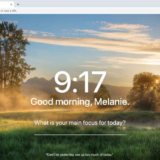Crafting Excellence: Exploring the Key Features of an Ideal App

In the fast-paced digital era, mobile applications have become an integral part of our lives. From communication and productivity to entertainment and health, apps cater to a wide range of needs. A perfect app is not just visually appealing; it also offers a seamless and intuitive user experience. In this article, we will delve into the key features that define a perfect app.
User-Centric Design: A perfect app puts the user first. It boasts an intuitive and user-friendly interface that makes navigation a breeze. Elements such as icons, buttons, and menus are well-organized, enabling users to effortlessly find what they need. An efficient user-centric design minimizes the learning curve and promotes user engagement.
Simplicity and Clarity: Complexity can deter users. A perfect app maintains a balance between functionality and simplicity. Unnecessary features and cluttered screens are avoided, ensuring that users can quickly comprehend the app’s purpose and functionality.
Personalization: Modern users appreciate tailored experiences. A perfect app incorporates personalization options that allow users to customize settings, themes, and preferences according to their needs and tastes. This personal touch enhances user engagement and loyalty.

Seamless Performance: An app’s performance is crucial. A perfect app is responsive, fast, and reliable. It loads quickly, transitions smoothly between screens, and rarely crashes. Users should feel that they are interacting with a well-optimized and efficient application.
Offline Functionality: While a stable internet connection is ideal, offline functionality is a significant asset. A perfect app provides users with basic functionalities even when they’re offline, ensuring uninterrupted usability.
Security and Privacy: User data protection is paramount. A perfect app follows best practices in terms of data security and privacy. It employs encryption, secure authentication methods, and transparent data-handling processes to build trust among users.
Regular Updates: A perfect app is not stagnant; it evolves over time. Regular updates bring new features, improvements, bug fixes, and security patches. Users appreciate an app that is continuously refined and responsive to their feedback.
Cross-Platform Compatibility: In a diverse digital landscape, an app’s compatibility across various platforms (iOS, Android, web) is crucial. A perfect app functions seamlessly on different devices and operating systems, offering a consistent experience to all users.
Effective Onboarding: First impressions matter. A perfect app guides users through a seamless onboarding process, providing them with clear instructions on how to use the app’s features. A combination of tooltips, tutorials, and interactive elements ensures users feel comfortable from the start.
Efficient Search and Navigation: Users should be able to find what they’re looking for effortlessly. A perfect app incorporates a robust search function and logical navigation paths. Features are logically grouped, making the app’s content easily accessible.
Feedback Mechanism: User feedback is a valuable source of improvement. A perfect app provides users with a way to share their thoughts, report issues, and suggest enhancements. This open communication channel fosters a sense of community and shows that the developers care about user input.
In today’s competitive app landscape, perfection is not just about aesthetics; it’s about offering an exceptional user experience. A perfect app combines user-centric design, simplicity, performance, security, and regular updates to create a product that resonates with users’ needs and desires. By incorporating these essential features, app developers can craft applications that stand out, gain user loyalty, and make a lasting impact on the digital world.





Write a comment